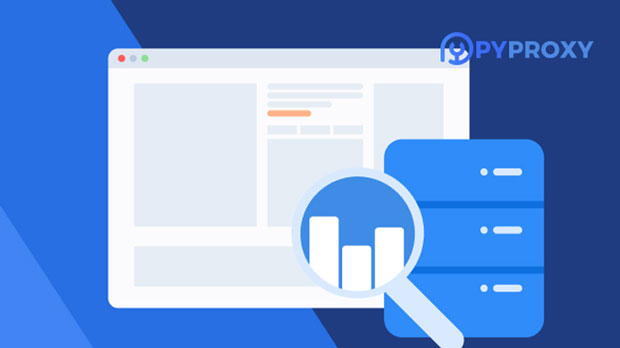Using a free socks5 proxy from the U.S. for streaming services is a topic of interest for many who want to access content from different regions while maintaining anonymity online. socks5 proxies are commonly used for bypassing geo-restrictions and ensuring a secure connection, but they come with limitations that affect their effectiveness in streaming media. This article delves into the pros and cons of using a free socks5 proxy for streaming, explaining whether such proxies are suitable for high-quality and uninterrupted streaming experiences. The focus will be on key issues such as speed, security, reliability, and compatibility with streaming platforms. Understanding SOCKS5 Proxy and Its FeaturesA SOCKS5 proxy is a versatile internet protocol that allows users to route their internet traffic through a remote server, effectively masking their IP address and enabling them to appear as though they are browsing from a different location. Unlike other proxy types, such as HTTP or HTTPS proxies, SOCKS5 can handle any kind of internet traffic, including TCP and UDP protocols. This makes SOCKS5 particularly suitable for activities like gaming, torrenting, and streaming, where uninterrupted data flow is essential.In the context of streaming services, a SOCKS5 proxy can be used to bypass geographic content restrictions. For instance, users in one country can access streaming services that are only available in another, such as U.S.-exclusive content on certain platforms. However, it is important to note that using a proxy to access content in this manner may violate the terms of service of some streaming platforms, potentially leading to account suspension.How Free SOCKS5 Proxies Differ from Paid OptionsFree SOCKS5 proxies are appealing due to their no-cost nature, but they come with several drawbacks compared to their paid counterparts. First, free proxies often have limited bandwidth and slower speeds, which are significant concerns for anyone looking to stream high-definition content smoothly. Streaming services, particularly those that offer 4K content, require a stable and fast internet connection to avoid buffering and maintain high video quality. Free SOCKS5 proxies may not be able to handle the data demands of such services, resulting in a poor viewing experience.Additionally, free SOCKS5 proxies tend to have less security and reliability than paid services. Free proxy providers may not invest in the infrastructure needed to maintain fast and secure servers. As a result, users may experience frequent disconnections, data leaks, or even malicious activity such as malware. Streaming requires not only speed but also a secure connection, as users’ personal information and streaming activity can be vulnerable without proper encryption and privacy protections.Impact of Free SOCKS5 Proxies on Streaming QualityFor users who intend to stream movies, shows, or live events, the quality of the streaming experience depends heavily on the performance of the proxy server. Free SOCKS5 proxies often struggle to deliver the speed and stability necessary for high-quality streaming.1. Speed and Buffering Issues Streaming high-definition video, particularly in 1080p or 4K, demands a fast and consistent internet connection. Free SOCKS5 proxies generally do not have the bandwidth to support such activities efficiently. This can lead to frequent buffering, long load times, and even video freezing. On streaming platforms, a stable connection is crucial for an uninterrupted experience, and free proxies often fail to meet this standard.2. Latency and Server Overload Another challenge with free SOCKS5 proxies is high latency. Latency refers to the delay between a user’s request and the server’s response, which can result in delayed streaming or unresponsive services. Free proxies typically have fewer servers and may be overloaded with users, causing increased latency. This is especially detrimental to live streaming events where real-time access is crucial.3. Data Throttling Many free SOCKS5 proxy services throttle the data speeds of their users to reduce server load and prevent abuse. This throttling significantly impacts the quality of the streaming experience, especially for those attempting to watch in high-definition. Streaming services often require continuous high-speed data transfers, and any throttling can lead to significant performance drops.Security Risks with Free SOCKS5 Proxies for StreamingSecurity is a major concern when using free proxies for any kind of online activity, including streaming. While SOCKS5 proxies themselves provide anonymity by masking a user’s IP address, free proxies often lack proper encryption, which leaves users vulnerable to attacks and data theft.1. Data Privacy Risks Free proxies may log user data, including browsing habits and personal information, which can be sold or exploited. Since streaming involves personal content such as watching preferences, account logins, and payment details, it is critical to ensure that the proxy service does not compromise your privacy. Paid proxy services often provide better privacy policies and data protection features, reducing the risk of exposure.2. Vulnerability to Malware and Cyberattacks Many free SOCKS5 proxy providers do not invest in robust security infrastructure. As a result, users are at a higher risk of encountering malware, ransomware, or other cyberattacks. A compromised proxy server can lead to data breaches, identity theft, or unauthorized access to sensitive information, making free proxies particularly risky for users looking to maintain privacy while streaming.Compatibility with Streaming PlatformsNot all streaming platforms are compatible with proxies, and this can complicate the use of free SOCKS5 proxies. Many services have sophisticated detection systems in place to identify and block proxy traffic. For example, Netflix, Hulu, and other platforms use algorithms to detect IP addresses associated with proxy services and block access accordingly. Free SOCKS5 proxies are especially susceptible to being detected, as they tend to have a large number of users from shared IP addresses, making it easier for streaming services to identify and block them.1. Geoblocking and VPN Detection While some streaming services may allow proxy access, most of them actively block IP addresses known to be linked to proxy servers. This is done to enforce regional licensing agreements and content distribution rights. A free SOCKS5 proxy may work temporarily, but there is a high chance that it will be detected and blocked soon after usage begins.2. Inconsistent Access to Content Even if a free SOCKS5 proxy successfully bypasses geoblocking on a streaming service, users may experience inconsistent access to content. The proxy's IP address could be flagged or blacklisted, resulting in users being denied access to certain titles or regions. Moreover, the proxy server's performance may fluctuate, causing disruptions in streaming or even complete disconnections.Conclusion: Is a Free SOCKS5 Proxy Suitable for Streaming?While a free SOCKS5 proxy can offer some benefits for bypassing geo-restrictions and maintaining privacy, it is generally not the best choice for streaming services. Free proxies often fall short in terms of speed, security, reliability, and compatibility with streaming platforms. Users looking for a smooth, high-quality streaming experience should be cautious when relying on free SOCKS5 proxies, as they may encounter buffering, latency issues, and potential security risks.For those serious about accessing streaming content without interruptions or compromising their privacy, a paid SOCKS5 proxy or a dedicated VPN service might be a more reliable and secure solution. While paid services come at a cost, they typically provide faster speeds, stronger security measures, and greater compatibility with streaming platforms, ensuring a better overall experience.In summary, free SOCKS5 proxies can sometimes work for casual streaming, but their limitations make them unsuitable for regular, high-quality viewing.
Dec 27, 2024
![arrow]()


















































